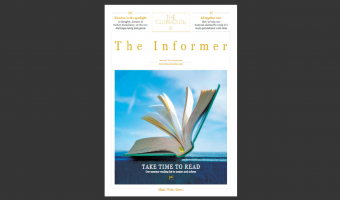News from in & around
The Clubhouse
All together now
More generations than ever before are working together which means company culture and work spaces have to be all-encompassing

We are living longer and retiring later, which means up to five generations of employees could be working together at any one time. How does this effect how we work? People born after the Second World War are having to adapt to their tech-savvy colleagues, and people just entering the workplace for the first time are having to adjust to how things are being done by their older colleagues. This huge span of ages results in competing demands and a variety attitudes towards both the workplace and the way we work. A survey by the Office for National Statistics cites the main challenges in managing a multigenerational workforce as:
- Differences in communication styles
- Expectations of in-office work and flexible working
- Balancing the needs for new ideas against maintaining the status quo
- Managing expectations for speedy promotions
- Negative generational stereotypes
- Company culture clashes
Communication – both how and when we communicate – is one of the main elements of work life that is influenced by age. Face- to-face meetings are more popular among older employees than younger ones who (perhaps unsurprisingly) prefer to communicate electronically either via email or group chat platforms, such as Slack or Teams.
Work motivators also differ from age group to age group too. Baby boomers (1946-1964) value in order of importance: health insurance, a boss they respect and a decent salary. Generation X (1965-1980) value salary, job security and job challenges and excitement. Generation Y (1981-1996) also known as millennials put an equal value on salary and job security but at the same time want the ability to pursue their passions; and Generation Z (1997-present) equally value salary, but the ability to pursue their passions trumps job security.
So how can you create a work space and company culture that accommodates different methods of communication and different work priorities? Work-life balance – a concept which for many is seen as being very hard, if not impossible to achieve – is now increasingly being seen as ‘work-life integration’ and this is especially important to millennials, who expect more from their work environment. According to a KPMG study, 69% of millennials would trade other benefits for a better workspace. This demographic is set to make up half the work force next year so businesses would do well to listen to what they want in order to attract and retain the best talent. Engagement is key, so work spaces that are designed to encourage collaboration through connection at a human level with breakout spaces and hubs are worth investing in. Remote workers can feel lonely and disconnected; creating a space where they can come and reconnect to fellow employees helps people feel motivated and therefore more productive.
Establishing company culture means establishing a community. This means creating a community that is welcoming for both older and younger generations which respects everyone’s needs. For some, working in a collaborative environment on a frequent basis is key; for others, visiting less frequently may be preferable. Some like open-plan, buzzy spaces; others prefer the quiet of a private space or secluded booth. The Clubhouse has one aim, which is to make its members and their businesses more successful so with that in mind, each Clubhouse is designed to accommodate the varying wants and needs of your diverse teams, respecting their different attitudes to work and approach to life, meaning that your business is able to attract and retain the best talent, whatever their age.
This article was originally featured in The Informer – July & August 2019. To read the full magazine please click here


